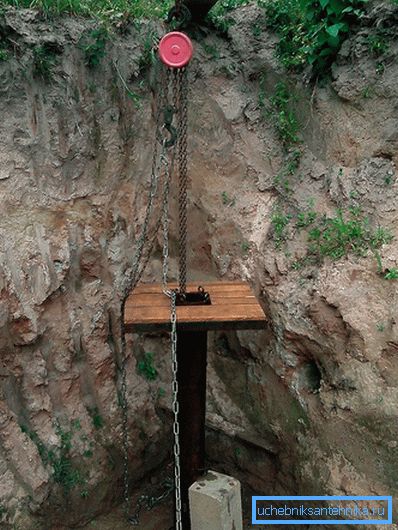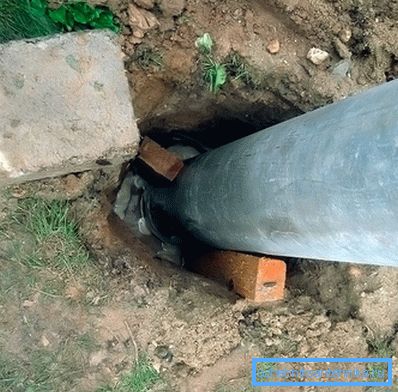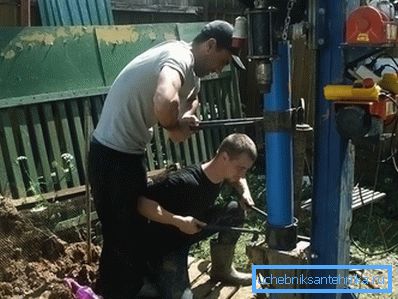How to pull a pipe out of a well: methods, tools needed
Having your own water source is an opportunity to provide a country house with clean water for household needs and not only. The homeowner has to independently solve various problems that arise during the maintenance and repair of the well and the corresponding equipment. Work on the prevention and restoration of its functioning is required when the source of water supply is depleted, the physical and chemical parameters of water are changed, the pump fails, and the well is clogged. The reasons for these factors may be mechanical damage to the pipe, including as a result of ground pressure. In this case, it is necessary to pull the pipe out of the well.
Well device

The well is equipped in such a way that two pipes fall into it. One larger diameter - casing, the other smaller diameter - operational. Casing is designed to protect the well from the fall of the soil, falling into the aquifer of pollutants. The pump is lowered into the production pipe. There should be a gap between the walls of the casing and production pipe.
In case of mechanical damage, contaminating and harmful substances from the overlying soil layers begin to fall into the well.
Repair work

With a slightly damaged casing, the water source can be returned to normal operation. To do this, you can insert a slightly smaller diameter plastic liner to close the crack.
There are several ways to do this job. They depend on the material from which the pipes are made:
- metal (steel) seamless;
- asbestos-cement;
- plastic.
Special requirements are imposed on pipes, since they are not only under load, but also in an aggressive environment: water, oxygen, minerals, temperature drops. According to these parameters, plastic is much superior to metal, slightly inferior in strength characteristics and threaded connections. Plastic is increasingly used as casing.
Technological extraction options:
- stretching the pipeline with a break in its part;
- rattling the pipe with flushing the body outside;
- unscrewing parts of the pipeline.
Stretch

The technological process of extracting the stretch consists in gripping the upper end of the pipe and pulling it up. The resulting tension must exceed the plasticity limit of the casing structural material.
Pulling the entire line at once is very difficult, since the friction forces across the surface in the thickness of the ground are significant.
If the pipe breaks while lifting, it should be lifted in parts. Capture the butt is a special exciting nozzle.
Squandering

If the diameter of the pipeline is small, then you can try to remove the casing by pacing its body while flushing the soil. When the soil is wet, the friction coefficient decreases. Circulation pumps are attached to the bottom of the well and to the top. When flushing the soil, it can be scrolled and swung in different directions.
The process of removing the pipe from the soil is a tension device. This can be a large clamping clamp with a lever or a special gripping nozzle with a mechanized (automated) tensioning force.
Unscrewing

Unscrewing the pipeline is possible only with the use of a special drilling rig, which is equipped with the necessary exciting nozzle, a device for tension and rotation. The process begins with the capture of the end, after which it begins to rotate counterclockwise. Thus, the upper element of the composite pipe is unscrewed from the rest. After the tension is applied and the unscrewed element is removed outside. The process is repeated until the entire pipeline has been disassembled and removed to the top.
In the process of extraction, it is necessary to observe the necessary tension and rotation force in order not to cut off the route.
In order to assess the imparting of the necessary tension force, according to the reference book, the mass of 1 running meter is selected depending on the diameter and wall thickness, which is multiplied by the metric area of the common pipeline (well depth). According to the calculated value select traction winch or jack (with self-extraction). To do this, you can build a special vertical rack with a winch, as shown in the video.
If the traction values are large, several tons, then it is recommended to use the services of specialists with special equipment.